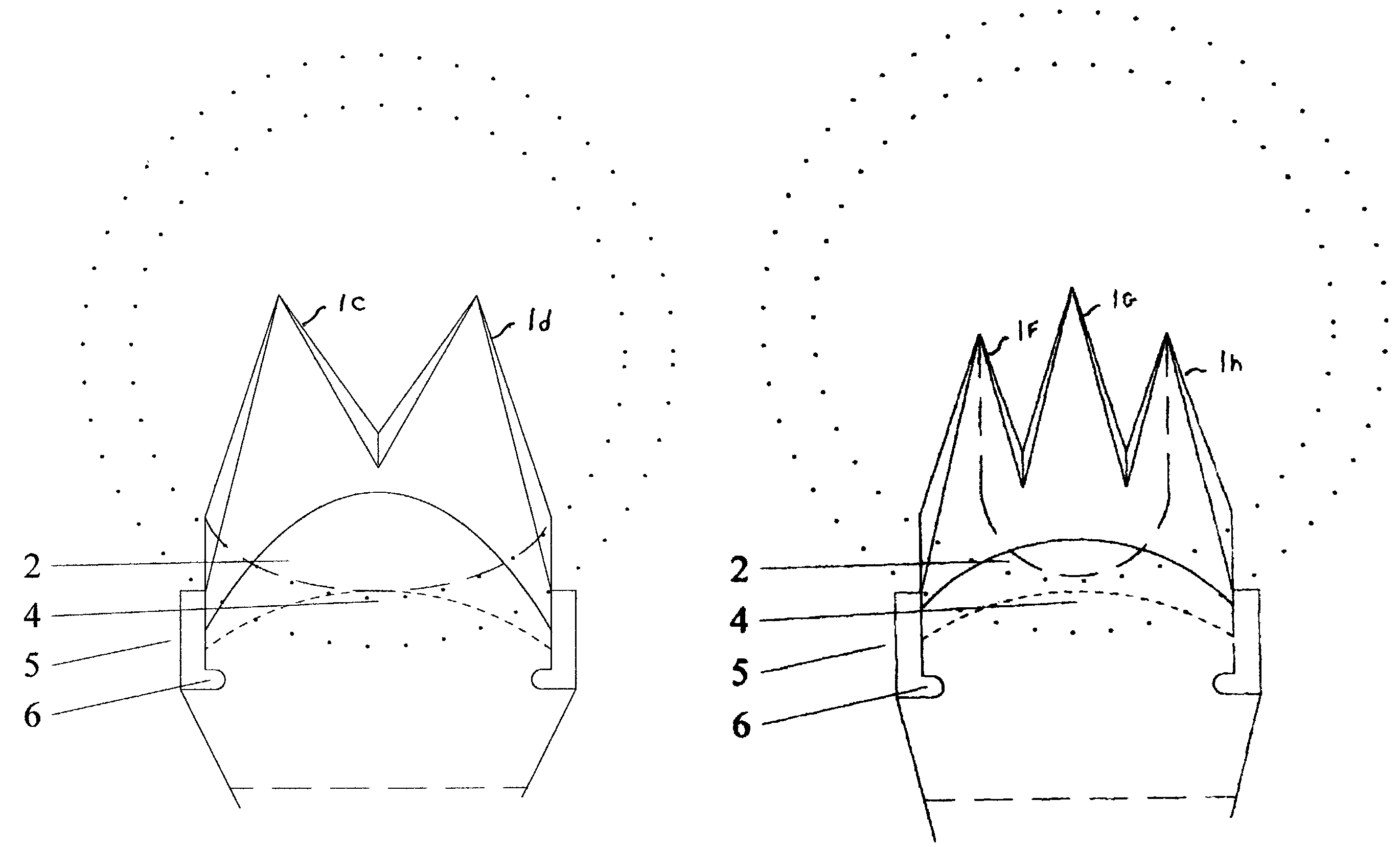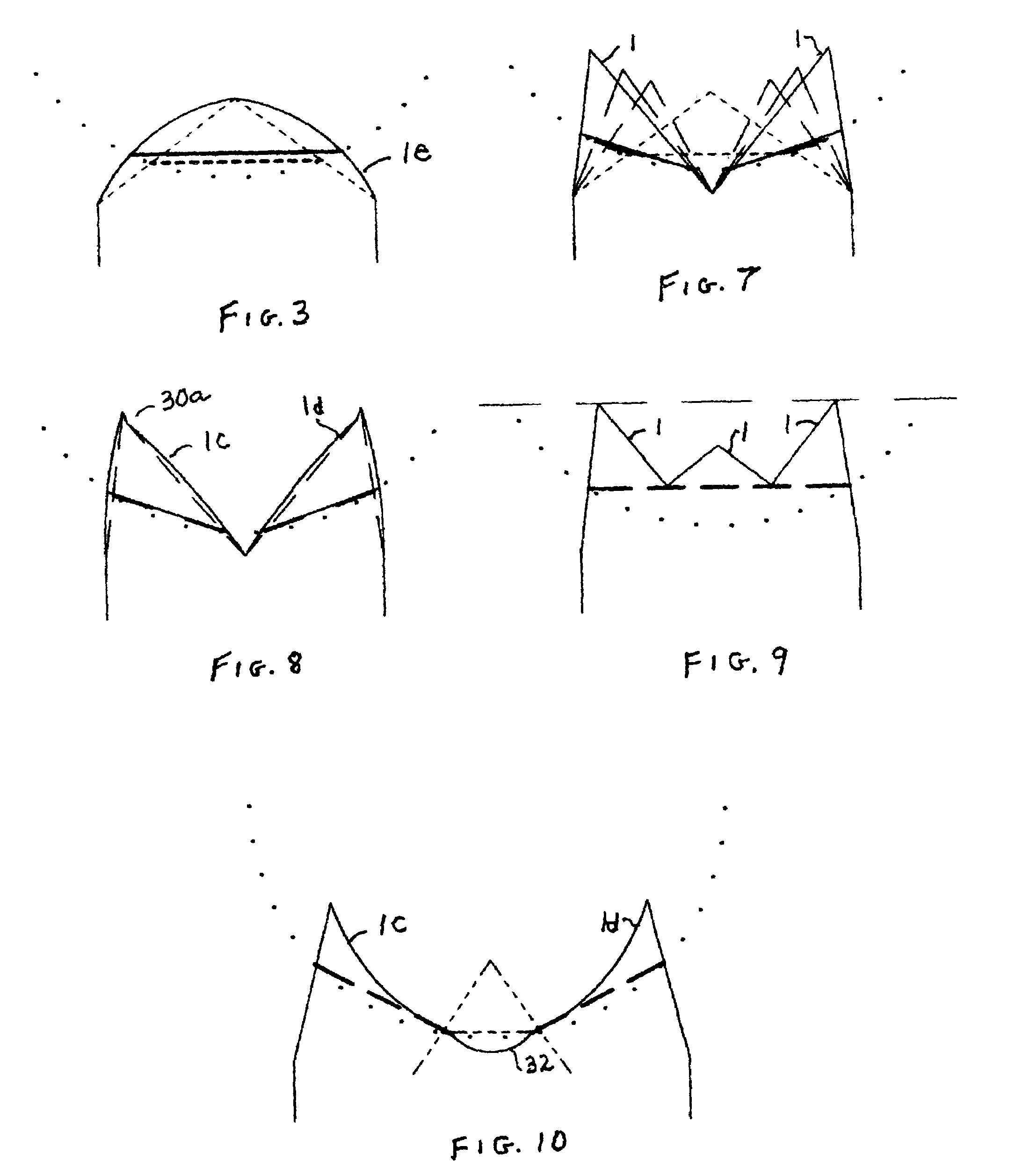Surgical knives for large, self-sealing corneal incisions coupled to a universal intraocular lens (IOL) injector
a corneal incision and injector technology, applied in the field of surgical knives for corneal incisions coupled to universal intraocular lens injectors, can solve the problems of corneal incisions that need sutures to close, time-consuming sutures use, unavoidable astigmatism or blurry vision, etc., to achieve efficient lens space, prevent accidental movement, and improve control and safety
- Summary
- Abstract
- Description
- Claims
- Application Information
AI Technical Summary
Benefits of technology
Problems solved by technology
Method used
Image
Examples
Embodiment Construction
[0010]As shown in FIG. 11, the three-component intra-ocular lens (IOL) Injector system includes (a) a keratome wedge shaped knife 1 for creating the self-sealing incision in the cornea of the eye, (b) a lens glide member 10“piggy-backed” on the knife, which glide member maintains a wedge-shaped opening in the cornea, and (c) an inserter member or plunger 20 that pushes the lens into the eye, the latter two components being part of the injector device 35. The intra-ocular lens injector device 35 attaches directly to the wedge-shaped keratome knife blade so that, as soon as the incision is made in the cornea, the surgeon can replace the blade with the injector device in one motion.
[0011]The surgeon places the lens upon a protective plastic sheet of the lens glide member that has side walls on it; these side walls 11 act as rails and guide the lens 13 unimpeded through the incision when the surgeon pushes on a plunger or inserter member 20 within the injector device. Once the lens is c...
PUM
 Login to View More
Login to View More Abstract
Description
Claims
Application Information
 Login to View More
Login to View More - R&D
- Intellectual Property
- Life Sciences
- Materials
- Tech Scout
- Unparalleled Data Quality
- Higher Quality Content
- 60% Fewer Hallucinations
Browse by: Latest US Patents, China's latest patents, Technical Efficacy Thesaurus, Application Domain, Technology Topic, Popular Technical Reports.
© 2025 PatSnap. All rights reserved.Legal|Privacy policy|Modern Slavery Act Transparency Statement|Sitemap|About US| Contact US: help@patsnap.com



